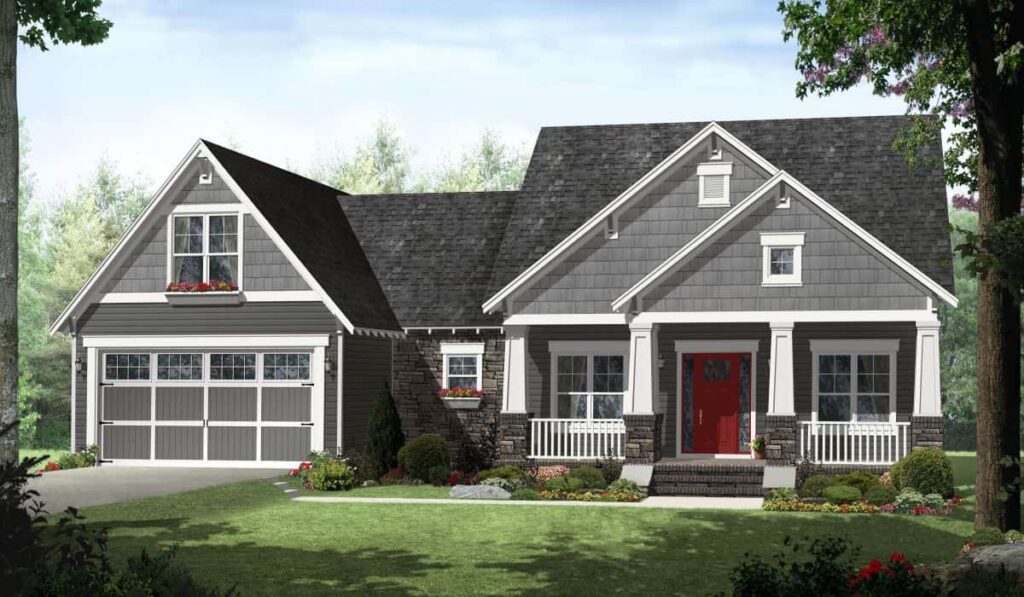- As of 2024, the average house price in the UK is around £293,399.
- Depending on location and property type, a 3-bedroom house typically costs between £250,000 and £350,000.
- London has the highest prices, ranging from £700,000 to £800,000.
- More affordable regions, with lower prices, include the North East, Scotland, and Wales.
- Market trends suggest a 4% price increase in 2025, making it essential for buyers to act strategically.
The average 3 bedroom house price in the UK is a key concern for homebuyers, investors, and families looking to step onto the property ladder. House prices vary significantly across regions, with factors such as location, demand, and economic conditions influencing costs. Whether you’re searching for a home in London or a more affordable area, understanding market trends can help you make an informed decision. This guide will explore the latest property prices, regional variations, and what to expect in the UK housing market.
The UK housing market has long been a focal point for residents and investors, with property prices varying significantly across regions. As of December 2024, the average house price in the UK reached £293,399, just £108 below the record high set in June 2022.
This figure reflects a 4.7% annual increase, indicating a resilient market despite economic challenges.
Understanding the Average Price of a 3 Bedroom House in the UK
Three-bedroom houses are often considered ideal for families, balancing space and affordability. While specific data on the average price of 3 bedroom houses is limited, we can infer approximate values based on available regional averages and property types.
Must Read: Average 2 Bedroom House Price in the UK
Regional Variations in House Prices
House prices in the UK exhibit notable regional disparities. Here’s a breakdown of average property prices by region as of December 2024:
|
Region |
Average House Price |
|
North East |
£171,338 |
| North West |
£234,355 |
|
Yorkshire and the Humber |
£210,116 |
| East Midlands |
£241,873 |
|
West Midlands |
£255,148 |
|
East of England |
£333,042 |
| London |
£539,238 |
|
South East |
£387,638 |
| South West |
£303,747 |
|
Wales |
£224,119 |
| Scotland |
£205,718 |
| Northern Ireland |
£203,593 |
These figures provide a general overview of property values across the UK. However, it’s essential to note that the average price of a 3 bedroom house can differ within these regions, influenced by factors such as urban versus rural locations, local amenities, and demand.
Average 3 Bedroom House Price in London
London’s property market stands out due to its significantly higher prices. As of December 2024, the average house price in London was £539,238, marking a 2.6% increase from the previous year.
Flats were the most common property type sold, averaging £543,968; terraced properties sold for an average of £778,020; and semi-detached properties fetched £771,323.
Given these figures, it is reasonable to estimate that a 3 bedroom house in London would average between £700,000 and £800,000, depending on the specific borough and property characteristics.
Factors Influencing 3 Bedroom House Prices
Several factors contribute to the pricing of 3 bedroom houses across the UK:
- Location: Urban areas, especially major cities like London, Manchester, and Birmingham, have higher property prices due to increased demand and amenities.
- Economic Conditions: Economic stability, employment rates, and wage growth directly impact the housing market. Rising wages can boost buyer confidence, leading to increased demand and higher prices.
- Interest Rates: Lower mortgage interest rates make borrowing more affordable, encouraging more people to buy homes, which can drive up prices. Conversely, higher rates may dampen demand.
- Government Policies: Initiatives such as stamp duty changes, help-to-buy schemes, and tax incentives can stimulate or cool the housing market. For example, impending stamp duty changes in April 2025 have led to a surge in property transactions as buyers aim to complete purchases before the tax increase.
- Supply and Demand: A limited supply of houses, especially in desirable areas, coupled with high demand, naturally drives up prices.
Current Trends and Predictions
The UK housing market has shown resilience in recent months. In February 2025, house prices rose by 0.4%, marking the sixth consecutive month of growth and bringing the average house price to £270,493.
This increase is partly attributed to buyers rushing to complete transactions before the upcoming stamp duty hike in April 2025.
However, experts anticipate that the market may soften after April. The stamp duty changes are expected to cause short-term volatility, with a surge in transactions leading up to the tax increase, followed by a potential drop in subsequent months. Despite this, some forecasts suggest a 4% rise in house prices for the year, indicating continued, albeit modest, growth.
Conclusion
The average price of a 3 bedroom house in the UK varies significantly based on location, economic conditions, and market dynamics. While specific data on 3 bedroom houses is limited, regional averages provide a useful benchmark. London’s property market remains notably higher than other regions, reflecting its unique economic and demographic factors. As the market adapts to upcoming policy changes and economic shifts, potential buyers and investors should stay informed and consider current conditions and future projections when making decisions.
Read More Blogs At: The Home Designer
Frequently Asked Questions
How much does a 3-bedroom house cost in London?
The property market in London is significantly more expensive than the national average. A 3-bedroom house can range from £700,000 to £800,000, with prices higher in prime areas like Kensington, Chelsea, and Westminster.
What factors influence the price of a 3-bedroom house in the UK?
Several factors affect property prices, including:
- Location (urban vs rural, proximity to transport and amenities)
- Economic conditions (employment rates, wage growth)
- Mortgage interest rates
- Government policies (stamp duty changes, help-to-buy schemes)
- Supply and demand in the housing market
Will house prices in the UK rise or fall in 2025?
Experts predict moderate price increases of around 4% in 2025, but the market may experience short-term fluctuations due to changes in stamp duty and interest rates. The demand for homes remains strong, but affordability challenges may slow growth in some areas.
Is now a good time to buy a 3-bedroom house in the UK?
It depends on your financial situation and market conditions. With rising house prices and upcoming tax changes, buying before April 2025 could be beneficial to avoid increased costs. However, interest rates and personal affordability should also be considered before deciding.





